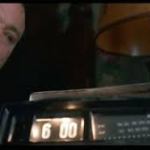Let’s face it, space is a risky business. I always considered every launch a barely controlled explosion. — Aaron Cohen, NASA Administrator Before writing this post, I Googled “false stakes” to see what other people had written on the subject and found… nothing! Not a single article or blog post on false stakes of the non-vampire …
Continue reading “F is for False Stakes”
Category: Plot & Story Elements
Tips for Writing Non-Converging Parallel Plotlines
As some of you might know, the book I’m currently writing is a frame story – a story within another story. For this project, I wanted two parallel plotlines, but with one important change. In my project the two stories never converge, not even at the climax as a traditional duel plotline will. This is …
Continue reading “Tips for Writing Non-Converging Parallel Plotlines”
4 Components of a Good Hook
Last week I blogged about the Hook vs Plot Twist Conundrum and realized it would be a good exercise to take some books off my shelf and read the jackets to learn more about what makes a good hook. After perusing my collection of YA and MG novels, I decided all good hooks had these …
Continue reading “4 Components of a Good Hook”
The Hook vs Plot Twist Conundrum
Last month I wrote about a story’s hook. And two weeks ago Robin wrote about reversals, the big and the small. For the purpose of this post, I’m talking about the big type of reversal – the plot twist! I’ll explain how I got twists and hooks mixed up and how to tell them apart. To refresh, a HOOK …
Continue reading “The Hook vs Plot Twist Conundrum”
4 Tips for Writing Reversals
One of the most important scenes in any book is the midpoint reversal. A reversal is an event that creates a fresh complication for the protagonist. It increases the stakes and sends the story off in a new direction. The reversal is the backbone of the classic three-act structure. If you don’t know what the …
Continue reading “4 Tips for Writing Reversals”
3 Things That Make A Story Worth Writing
I’ve had many false starts on my writing journey – stories that started strong and got lost in the middle, stories that fell flat and forgettable at the end, stories that had a debilitatingly weak character arc. I found ways to address all those problems, but in the process still wasted a lot of time. …
Continue reading “3 Things That Make A Story Worth Writing”
Tips for Crafting a Frame Story
As you may have figured out from my post last week, 6 Tips for Re-imagining a Classic Story, I’m working on a project for NaNoWriMo that involves a reinterpretation of a classic tale. In my case I’ve decided to tell it a frame story. This is a literary device using a narrative structure to tell …
Continue reading “Tips for Crafting a Frame Story”
Writing Unforgettable Endings
The thing about writing a novel or film is that it all comes down to the ending. A great ending is what makes a story memorable. All of the books on my bookshelf have unforgettable endings. The books that don’t make the cut may have had fascinating premises, entertaining characters, and intriguing plot twists, but …
Continue reading “Writing Unforgettable Endings”
Reading for Writers 101: Is Your Story Ending ‘Right’?
I read the first book of The Hunger Games series when it came out six years ago. Then I read the next one when it was released. Before the third and final book of the series arrived, I pre-ordered the box set. And put it on my shelf. For years. It’s not that I didn’t …
Continue reading “Reading for Writers 101: Is Your Story Ending ‘Right’?”
Screenwriter Tips for Novelists: 3 Things that Keep Your Story on the Road (not the Goat Path)
Last week I talked about Mapping the Mushy Middle of a story so that your characters don’t get waylaid on some meandering goat path of grass-eating boredom before finally arriving in Act III. Or worse, get stuck in the swamp and never reach The End! It comes down to knowing your destinations in Act II: …
Continue reading “Screenwriter Tips for Novelists: 3 Things that Keep Your Story on the Road (not the Goat Path)”









